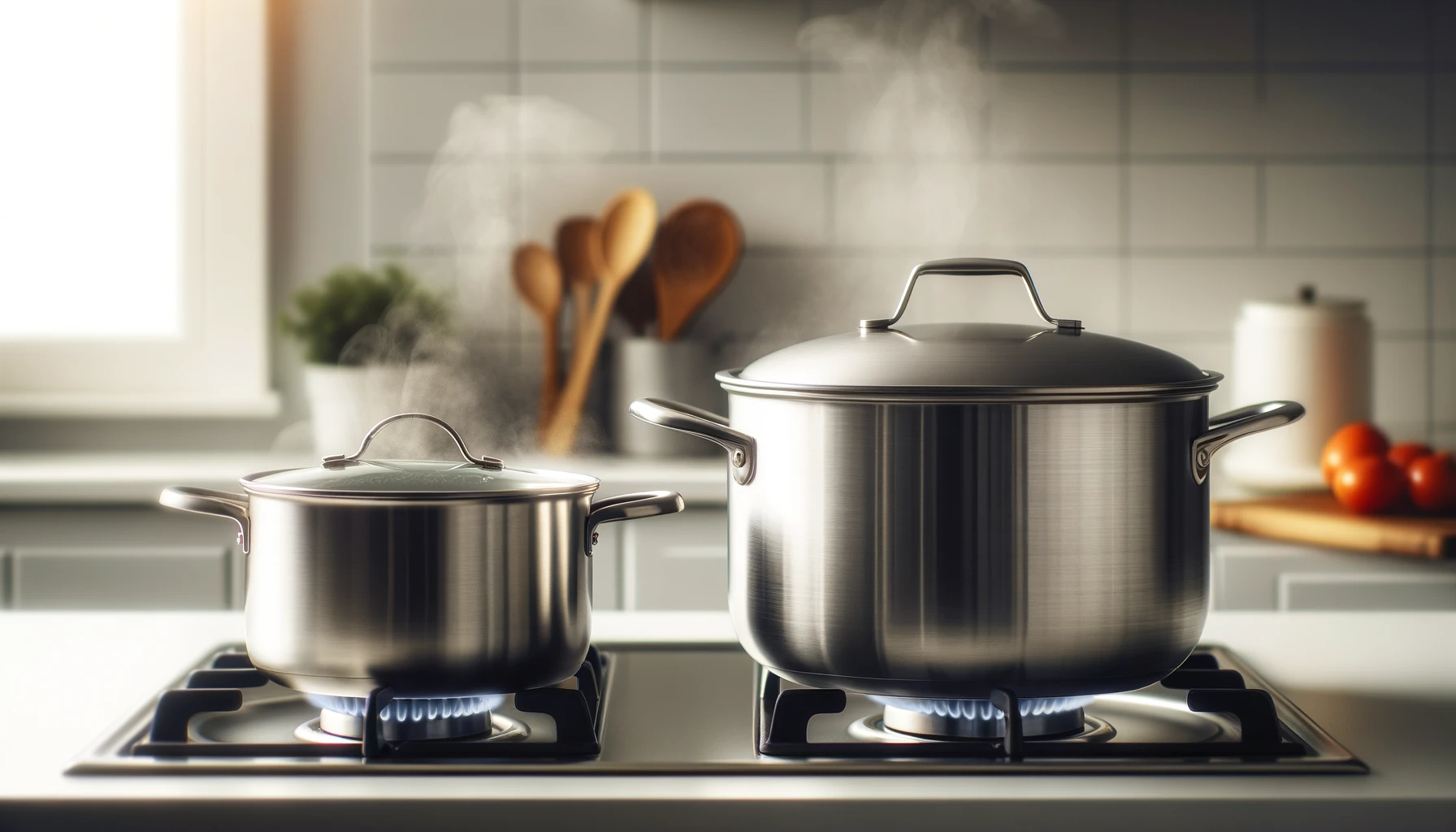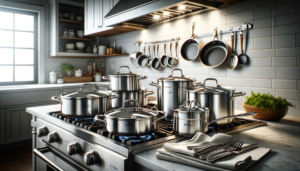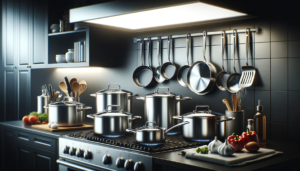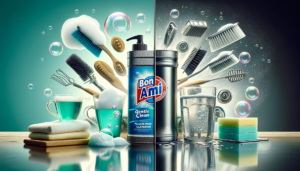With so many cookware options flooding both local and online stores, deciding between enamel and stainless steel pots and pans becomes an overwhelming choice for aspiring home chefs.
By comparing critical factors like durability, heating efficiency, cleaning needs, weight and pricing, we can better evaluate where enamel cookware and stainless steel cookware each excel.
Let’s dive in to see how these two popular cookware materials stack up across the key kitchen performance categories.
Enamel vs Stainless Steel Cookware: Which Is Better?
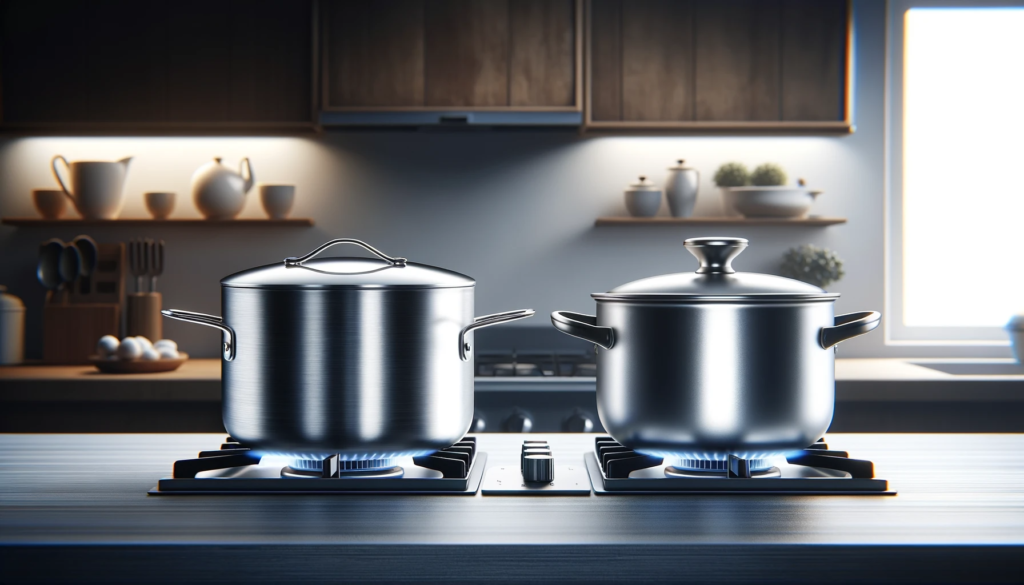
If simply judging enamel vs stainless steel cookware on which material is “better”, durable stainless steel edges out enamel options for its combination of longevity, heating precision, and reliable cooking performance over many years.
However, enamel cookware provides more convenience, ease-of-use, and affordability that appeals to many home cooks wanting quality without high maintenance.
As we explore below, choosing between them depends more on your specific cooking needs and kitchen environment.
While stainless steel ranks as the technically superior material, user-friendly enamel matches 75% of its capabilities with greater simplicity.
Durability

When evaluating the durability of enamel and stainless steel cookware, there are several factors to consider that influence their long-term use.
Enamel cookware refers to pots and pans that feature a glass-based enamel coating applied on top of a metal base material.
The smooth finish of enamel resists chipping under normal cooking conditions.
However, direct impacts from being dropped can damage the coating leading to cracks or chips.
These exposed areas are more vulnerable to staining or rust over time.
The enamel coating is also sensitive to sudden temperature changes.
If overheated, the glass-based enamel can crack or bubble which impacts its nonstick properties.
Stainless steel cookware is valued for its rugged durability against scratches, dents, warping, and corrosion.
The metals and alloys used in high-quality stainless steel maintain their integrity very well through daily cooking stress.
Years of regular pots and pans usage may lead to some superficial metal discoloration but will not impact performance.
Stainless steel handles high heat without risk of cracking or chipping.
One tradeoff is that all-metal cookware can show staining after cooking many acidic or alkaline ingredients.
With care and cleaning, staining can be prevented or removed to restore the gleaming finish.
When evaluating durability, stainless steel is generally the longer-lasting material that resists damage from drops, overheating, or cleanup.
Enamel coatings add a convenience factor but require more careful use to prevent chips and cracks over time.
Considering cooking habits and kitchen environment can clarify whether durable stainless or user-friendly enamel best fits the expected lifespan.
Heat Conductivity

Choosing between enamel and stainless steel cookware also involves evaluating differences in their heat conduction during cooking.
Enamel pots and pans feature a glass-based coating adhered onto a metal heating base.
This creates an intermittent layer between heat source and food.
As a result, enamel cookware is more prone to uneven heating or hot spots forming, especially around the bottom.
Thinner enamel layers spread heat more evenly but lower quality enamel tends to cut back thickness.
Stainless steel cookware has high thermal conductivity for very even heating distribution.
Quality stainless steel brands minimize hot spots by using alternative metals like copper or aluminum sandwiched between stainless layers.
The resulting cookware matches the nonstick convenience of enamel with improved temperature regulation.
Some stainless steel cookware takes additional steps to incorporate steel or aluminum plates along the base to further address heat conductivity.
When comparing evenness of heating, stainless steel cookware typically excels over enamel alternatives.
Stainless steel construction allows it to adapt designs better suited for heat conduction.
Meanwhile quality enamel cookware still carries a risk of developing hotspots during cooking.
Consider what types of meal preparation will be involved to determine if enamel’s convenience outweighs stainless steel’s heating precision.
Ease Of Cleaning
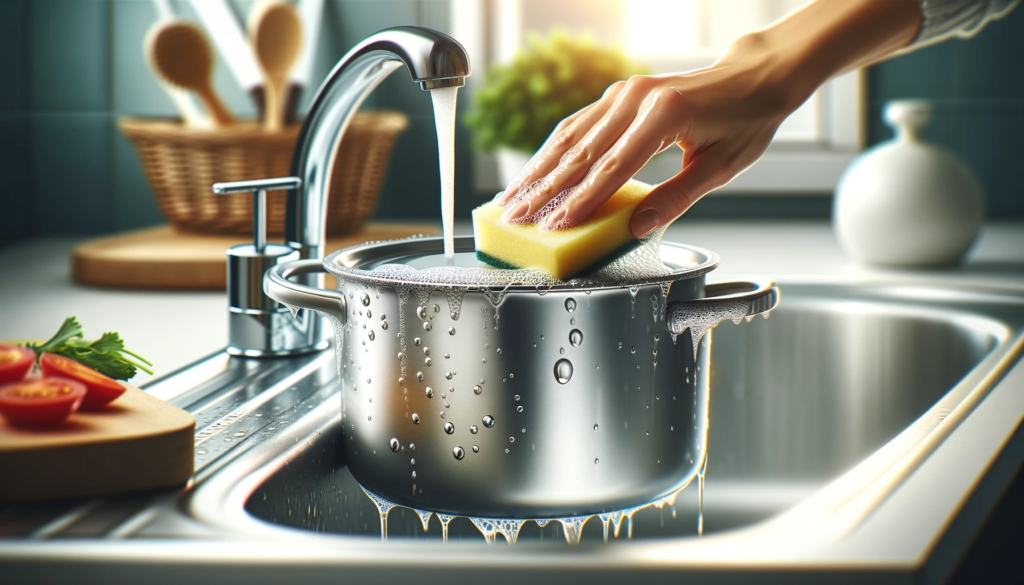
Ease of cleaning is another point of differentiation between enamel and stainless steel cookware.
The smooth glass enamel surface lets cookware easily release food with minimal sticking.
This allows enamel pots and pans to be effortlessly cleaned by hand and often safe for the dishwasher as well.
However, while resistant to scratches, the enamel surface can gradually become stained by acidic ingredients.
Prolonged exposure to tomato sauce, vinegar, or wine causes discoloration that cannot be removed.
Stainless steel has more naturally stickiness that requires seasoning and fat/oil layers during cooking to prevent food bonding.
Without these measures, stainless steel is prone to stubborn sticking, burning, and difficult-to-remove residue.
However, applying proper cooking techniques allows stainless steel to develop a nonstick surface.
Additionally, durable stainless steel allows for more abrasive scrubbing during cleaning without risk of damage.
It can also withstand harsher chemical cleaners needed to remove some types of staining.
For those wanting convenient cleaning, enamel delivers effortless nonstick food release paired with smooth, scratch-resistant surfaces.
Stainless steel requires more seasoning and cleaning effort but allows for more aggressive top-to-bottom cleaning methods.
Consider how much post-cooking cleaning convenience is needed when deciding between the two.
Weight
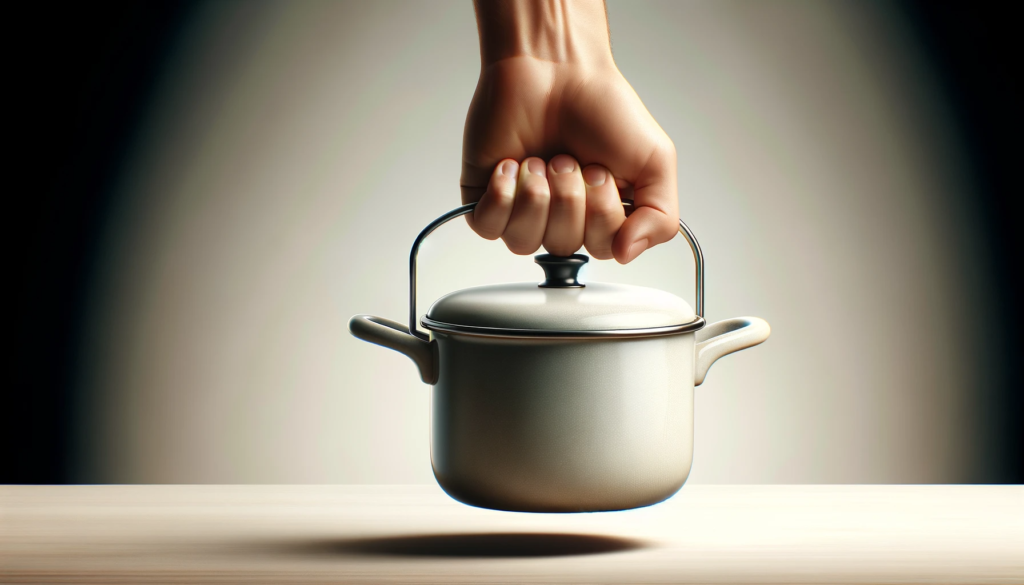
When evaluating cookware weight, enamel often has an advantage over stainless steel for easier handling.
Because enamel coatings are layered onto metal bases, it creates a lighter construction than solid stainless steel.
The reduced heft and better balance of enamel pots and pans allows for simpler lifting, especially when full.
However, cheaper enamel cookware may compromise durability by using thinner bases more vulnerable to warping.
One tradeoff of stainless steel’s unmatched durability is increased weight over other metals.
All-metal stainless steel construction results in heavier cookware than options like enameled or aluminum.
While thicker materials hold heat better, they also require two hands for safer manipulation.
New stainless steel cookware combats this through ergonomic details like hollow handles on stock pots or thinner walls on frying pans.
But compared to other choices, stainless steel uses more weight for cooking performance.
If easy, lightweight handling is important for cookware, enamels offer an advantage.
Stainless steel weights more but balances heft with heating precision.
Factor ergonomic handling needs when deciding between the two kitchen staples.
Cost
Acquiring enamel or stainless steel cookware means weighing price considerations from value-based and premium brands.
Quality enamel pots and pans from leading manufacturers like Le Creuset carry a moderate price tag.
Costs trend higher for premium details like intricatepatterns, signature colors, or decorative add-ons exclusive to each brand.
However, household names still carry lower costs than luxury designers.
Budget-level enamel cookware exists but consistently suffers in durability and cooking performance.
Quality stainless steel demands a higher investment upfront but returns excellent value over years or possibly decades of use.
Renowned brands like All-Clad, Viking, and Calphalon price their cookware lines higher based on material grades, construction quality, and included features.
However, their exceptional durability, heating efficiency, and cooking surface nonstick properties justify costs for serious home cooks.
While striking discounts on stainless steel cookware may indicate thinner bases or narrower component quality.
Consider lifetime value beyond just price tags when choosing between enamel and stainless steel.
Enamel offers more convenience at lower costs but risks longevity or hidden surcharges.
Stainless steel emphasizes performance and durability that shows value over many years of reliable cooking.
Evaluate your budget flexibility as a home cook when deciding on investing in quality pans and pots.
In summary, enamel and stainless steel cookware both carry unique advantages and disadvantages regarding durability, heating properties, cleaning requirements, ergonomics, and pricing.
Consider your own cooking needs and kitchen environment before determining if enamel or stainless steel fits best.
While not always true, enamel often favors convenience and affordability while stainless steel highlights precision and longevity.
Think about your cooking lifestyle and habits to decide what strengths align better.
Conclusion
In closing, both enamel and stainless steel cookware bring unique strengths to the kitchen.
For convenience seekers wanting hassle-free cleaning and storage, enamel delivers quality nonstick performance with less maintenance.
Stainless steel prioritizes precision cooking and long term durability to justify higher start-up costs.
Evaluating your specific cooking lifestyle and habits helps determine whether durable stainless steel or versatile enamel makes sense for upgrading your pots and pans.
